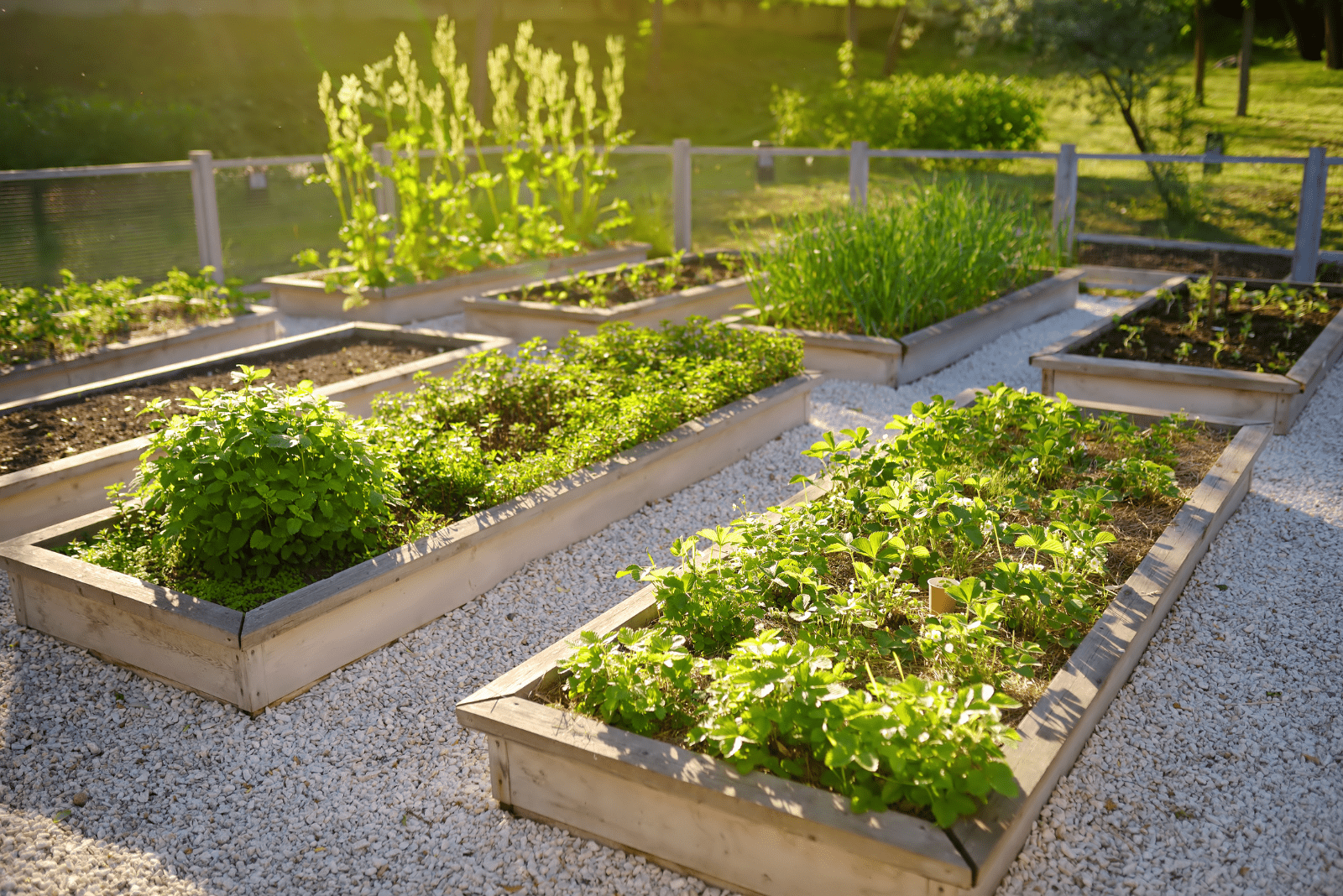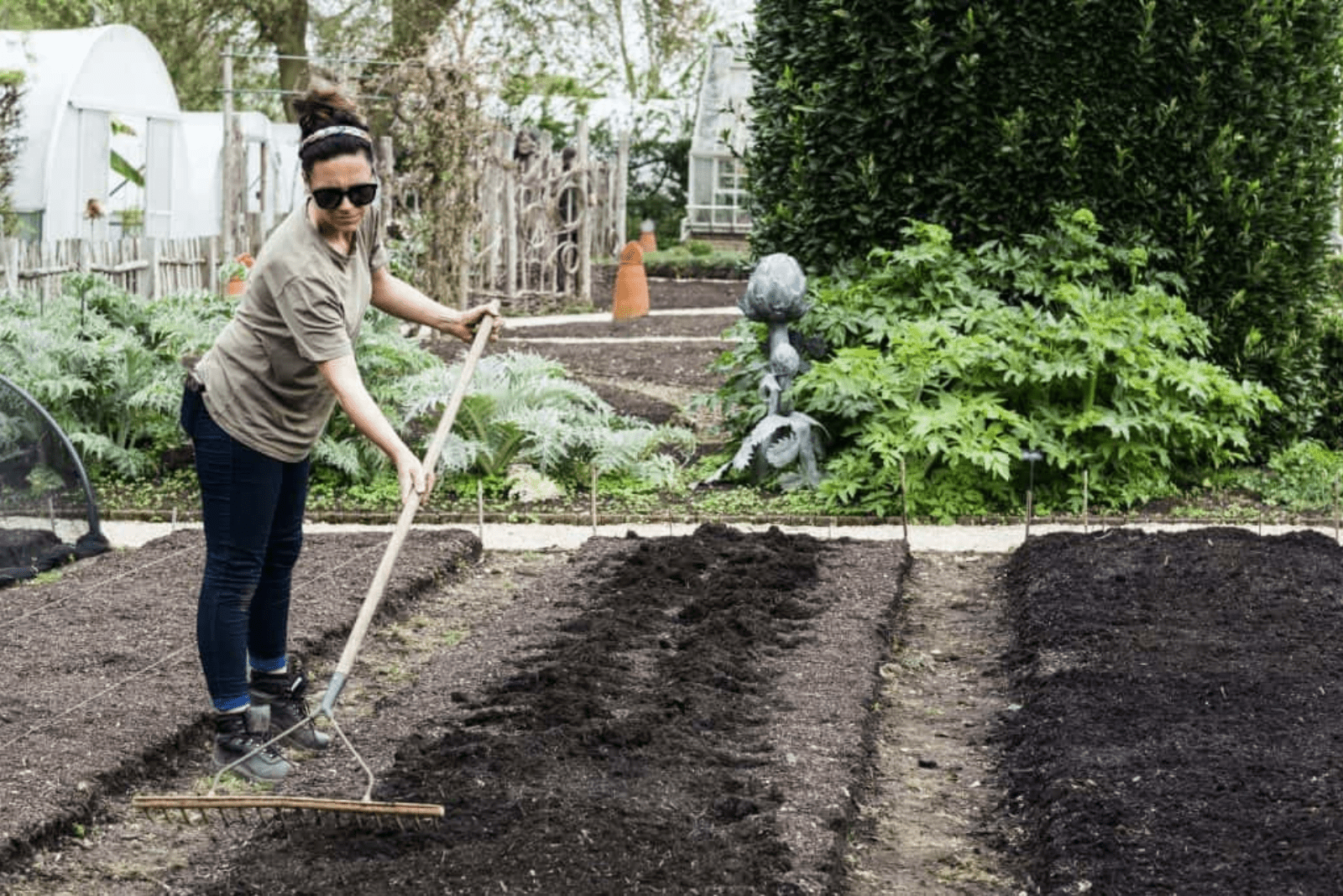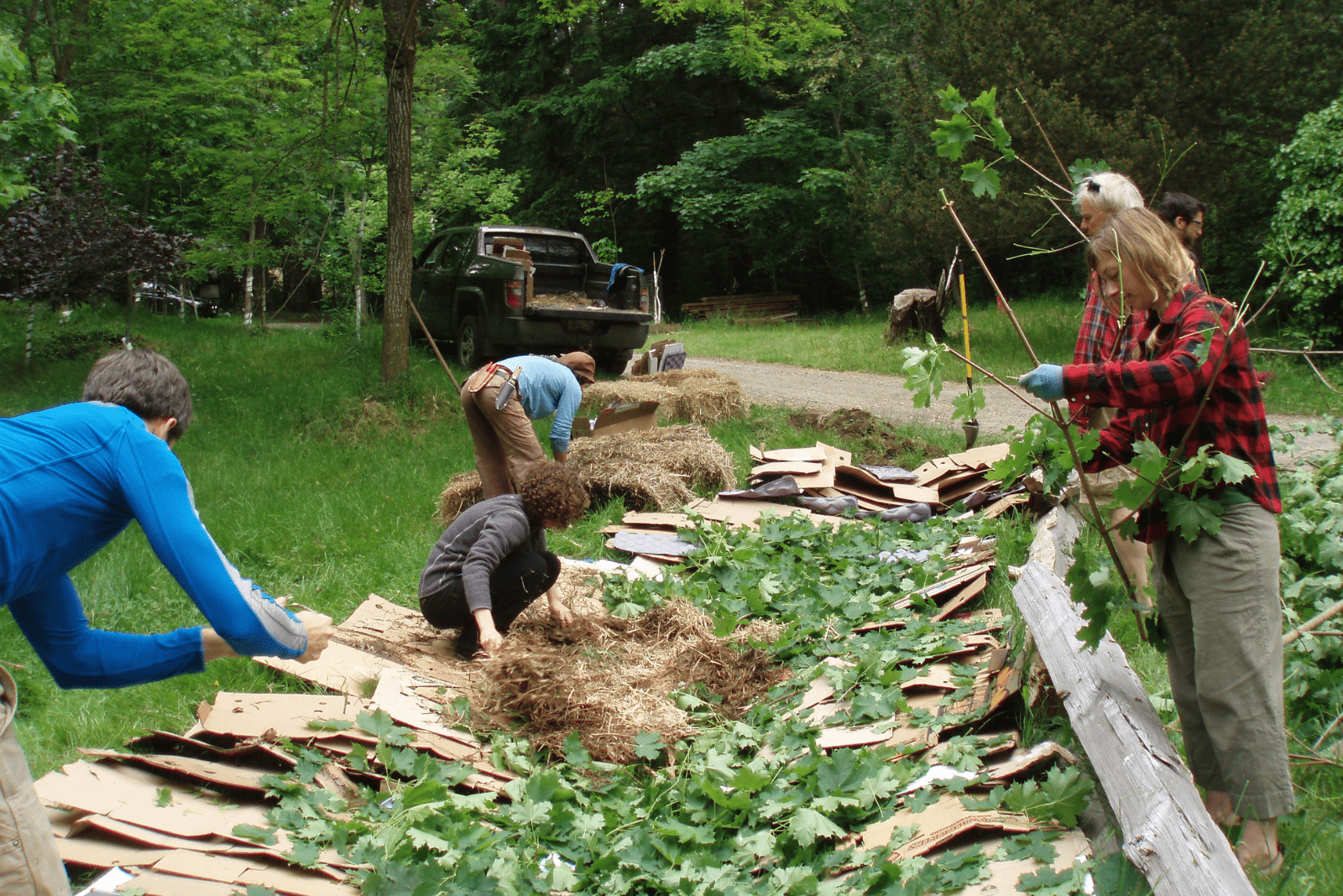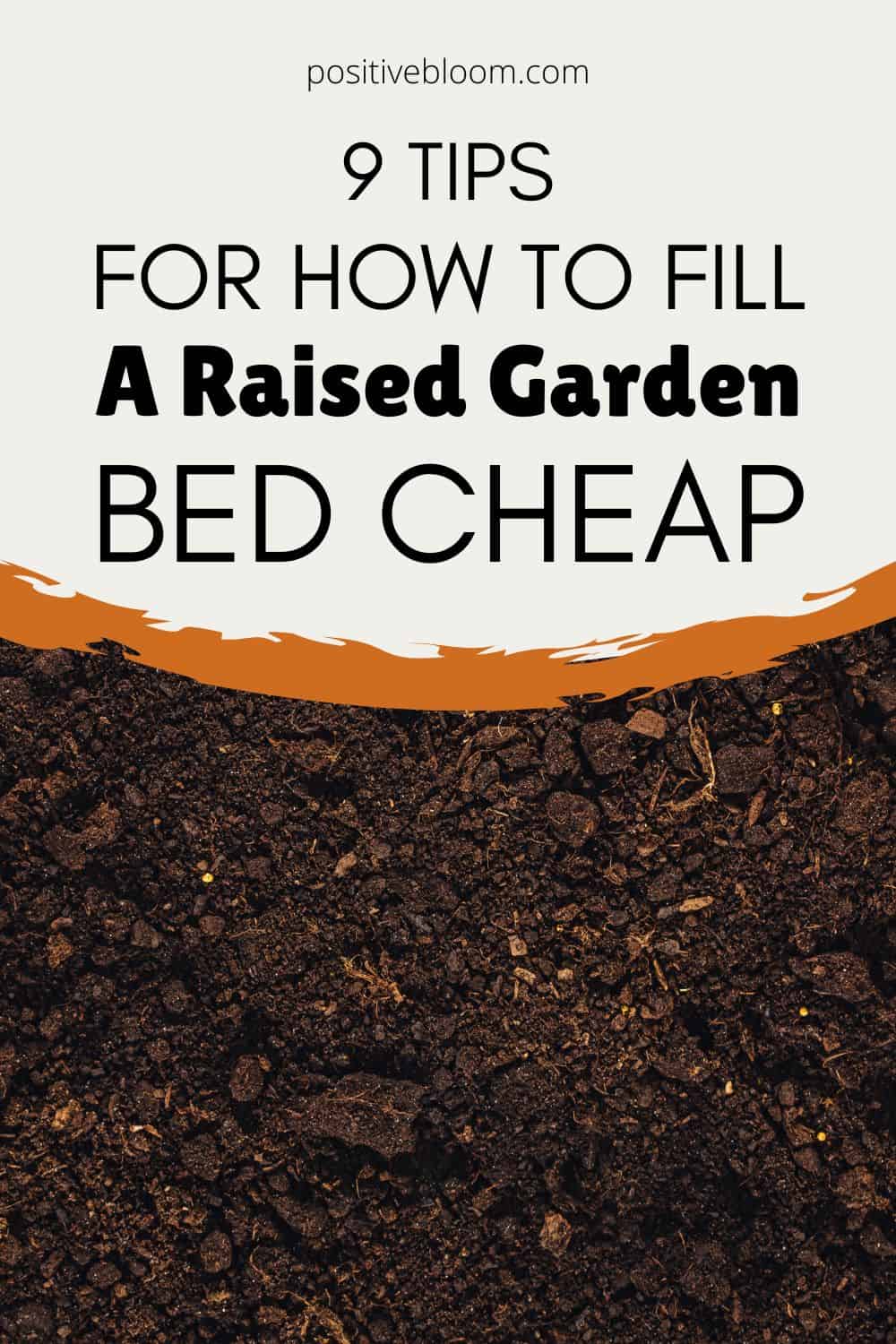Organic gardening can sometimes seem like an expensive investment, but there are loads of great tips and tricks to help cut expenses.
For instance, you can make your own compost, use rainwater, invest in a solar-power grid to save money on your electricity bill, etc.
The main point is to become as self-sustainable as possible!
Today I’m going to help you out with some tips on how to fill a raised garden bed cheap.
Let’s get started!
How To Fill A Raised Garden Bed Cheap: 9 Methods
There are many gardening tips to help you reduce expenses when filling a raised bed, such as using a specific gardening method (hugelkultur, core gardening, etc.), buying soil in bulk, improving drainage and aeration, composting, etc.
You can also use non-toxic raised garden bed liners and landscape fabrics or even line the garden bed with cardboard to prevent runoff and leakage.
Below, you will learn about some popular (and cheap) methods of filling your garden beds.
1. Hugelkultur Method
This method is pretty straightforward; you just fill the garden bed with debris, such as kitchen scraps, wood chips, grass trimmings, old leaves, large logs, and other hardwoods.
Don’t skip on large pieces, as they are essential for hugelkultur. They will decompose over time and enrich the soil with organic matter.
Make sure that you fill at least 10-12 inches of the bed with rotting debris, and fill all the gaps with raised bed soil.
2. Core Gardening
Core gardening is an excellent way to reduce water expenses and weed growth.
You need to dig a ten-inch deep hole in the middle of your garden bed, put down several layers of cardboard, and stuff it with straw, old leaves and twigs, cut grass, etc., then Fill the rest with a blend of potting soil, compost, and topsoil so that it resembles a mound.
The core will hold water and ensure that your veggies are hydrated throughout the season, and you won’t need to water it deeply.
3. Ruth Stout
The ruth stout gardening method is basically covering the exposed soil with mulch, which will soon break down and introduce organic content to the substrate.
But even though rotting material enriches the growing medium, it also prevents the growth of weed seeds and reduces erosion.
This method uses hay, but you can try other methods that also use organic mulch.
4. Lasagna Gardening Method
If you’ve just gotten a new raised bed for your sweet potatoes and don’t know how to fill it and save money at the same time, try the lasagna gardening method!
It is similar to the hugelkultur method, but in this case, you must be mindful of the layering (just like making real lasagna).
First, add a layer of cardboard to the bottom of the raised bed in order to suppress weed growth. Then add a layer of mixed cardboard and old leaves. Once you’re done with that, keep adding different layers of organic components that will soon decompose and enrich the soil with nutrients.
5. Back To Eden Gardening
This method is one of the permaculture techniques you can implement for eco-friendly gardening.
You first have to distinguish between permaculture and horticulture, as the former is a movement that connects people’s lifestyles with gardening, while the latter is focused on commercial production.
Back to Eden is a regenerative method that requires no tilling, weeding, or watering.
First, add a layer of cardboard or newspapers about 10-12 inches deep to suffocate the weeds, then fill the garden bed halfway up with a layer of compost or aged animal manure mixed with topsoil (about 3 inches).
After that, add a thick layer (at least 5-6 inches) of untreated wood chips (they can also contain branches, twigs, and larger pieces).
Plant the seeds into the soil, not mulch, so that they can sprout and grow!
6. Incorporating Organic Materials
Using organic materials in your soil mix or as mulch is a great way to save money. The ingredients will break down over time and fertilize the soil, so you’ll have to use little-to-no fertilizer.
You can read more about some organic materials that work amazingly well below:
Peat Moss
If you want your soil to retain more moisture, you can always add peat moss. Almost every garden store has it, and it’s relatively affordable.
However, it‘s acidic, so don’t use it too much for plants that prefer neutral or alkaline soils. It will suit plants such as cranberries, hydrangea, onions, tomatoes, etc., just fine.
Wood Chips
You can get this material for free from your local arborist or tree company. The best way to use it is to mulch your plants with it.
It will suppress weed growth, and once it starts decomposing, it will enrich the soil with nutrients so you won’t have to use fertilizers as much as before.
Grass Clippings
Mulching the soil with grass clippings or adding them to your compost bin are both excellent ways of introducing more minerals to the substrate.
And the best news is that you don’t have to pay a dime to get them!
Coconut Coir
Growing vegetables in coconut coir has many benefits because this material provides both moisture retention and aeration at the same time.
You can add it to the soil mix, plant veggies only in this medium, use it for your hydroponics, or to mulch your plants.
The good news is that it is available in large quantities, so if you have a couple of cubic feet of soil to cover, you can just order this material online.
Cardboard
Using cardboard to line your raised garden bed is an excellent idea because you can get it for a reasonable price at Walmart.
It won’t leach any chemicals into the soil (unless there’s ink on it), but it will break down over time, so you’ll have to replace it at some point.
7. Using Materials That Improve Aeration
Aeration and good drainage are essential for growing root vegetables, so don’t forget to add some horticultural sand, vermiculite, pumice, or perlite.
8. Buy Soil In Bulk To Save Money (Potting And Garden Soils)
Buying bagged soil isn’t a bad idea if you need to fill a pot or two, but filling an entire raised bed can be quite costly.
However, if you buy a yard or truckload of soil, you’re more than likely to get a discount. First, consider how much a yard of topsoil weighs before purchasing it.
Finally, always choose high-quality soil over garden soil, as the former can contain salts, hold more water, and break down organic matter sooner.
Of course, you can always amend garden soil with homemade compost and aerating materials, etc.
9. Using DIY Compost In Your Vegetable Garden
When new gardeners look at the differences between compost and fertilizer, they don’t usually have long-term expectations in mind.
Although fertilizers will give you a more abundant yield this time, adding compost will enrich the soil with nutrients and beneficial microorganisms, and you’ll have to use less and less fertilizer.
Just add kitchen scraps, old leaves, twigs, grass clippings, and even coffee grounds (if you want to make it slightly more acidic) to your compost pile, and wait until the maturation process is complete.
But if you don’t have compost, you can always order some or use worm castings.
How Much Soil Do You Need To Fill A Raised Garden Bed?
Once you have settled upon a specific method for filling your garden bed, you should first measure your raised bed.
After measuring, multiply the measurements to get the cubic feet of soil you’ll need to fill the raised bed.
For instance, if your garden bed is 6 x 3 x 1, you’ll need 18 cubic feet of soil to fill it. However, always buy more because the growing medium can compact a bit, leaving you with crevices you cannot fill in.
The decomposition process can also cause the soil level to “sink”, so you’ll have to add more soil, compost, or mulch.
Final Thoughts
It’s important to know how to fill a raised garden bed cheap because buying a cubic yard of high-quality soil, purchasing landscape fabrics and lines, and using fertilizers, pesticides, etc., can be quite expensive.
We presented nine effective methods you can try out, and most of them require organic materials you can get in your backyard or at least from a local source (such as a tree company).
Making homemade compost, using organic mulch, such as grass clippings, old leaves, and wood chips, and buying soil in bulk are just a few of the things you can do to reduce the cost of filling a garden bed.
Happy planting, and until next time!
Like this post? Share or pin it for later!





